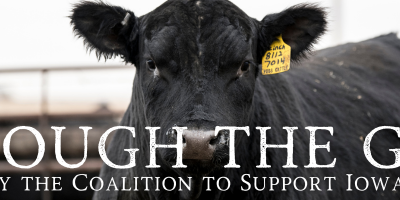CSIF Tips of the Month – April 2013
04-01-2013 in Through The Gate
Rules and Regulations Highlight
Applying manure this spring? Here’s what you need to know
April 1 marked the end of winter manure application rules being in effect in Iowa. However, if you’re planning to apply manure this spring, there are still rules that you need to be aware of. The Iowa Manure Management Action Group (IMMAG) provided a checklist of things to review prior to applying:
- Be sure to follow all separation distance requirements for land application. (Note Table 2. These separation distances apply to ALL livestock operations, regardless of size, type of manure, or source of manure.)
- Follow all requirements of your manure management plan or nutrient management plan (if you are required to have one).
- Follow all practices you agreed to when implementing your Master Matrix (if your facility was required to use the Master Matrix).
- Update your manure management plan or nutrient management plan as needed to reflect changes in application methods, additions of fields, changes in application rates and timing.
- Apply manure on the flattest slopes possible, and as far from water sources as possible.
- Avoid application on areas that drain to surface tile inlets.
- Do not apply manure in a grassed waterway.
- Do not land-apply manure until after the snow melts.
- Avoid application prior to predicted rainfall, snow or warming conditions that could cause snow to melt or runoff.
- Follow all stockpiling rules.
It is important to mention that even though it is legal to land-apply manure, you are still required to protect water quality. If there is runoff that results in a water quality impairment, you can still be held liable. Following the above mentioned best management practices will help you avoid this situation.
Double and triple stocking: How to count animal units
In the last few months, there have been many questions about animal unit capacity and how it relates to DNR regulations. In particular, these discussions have centered around double and triple stocking of hog barns.
It is important to note that pigs between 15 and 55 pounds are considered 0.1 of an animal unit. Hogs over 55 pounds are 0.4 of an animal unit. For example, if a 2400-head wean-to-finish hog barn is permitted for 960 animal units (2400*0.4=960 animal units), how are the animal units calculated when the barn is double or triple stocked?
The questions being asked were: must the double-stocked pigs be moved before any of the pigs reach 55 pounds? Or is it before the average weight of the pigs at the site is 55 pounds?
Eldon McAfee, legal counsel for the Iowa Pork Producers Association, offers some insight. “Actually, the correct calculation is neither. The calculation is based on the number of pigs above 55 pounds and the number of pigs weighing 55 pounds or less… Other than for purposes of the 55-pound limit, for purposes of animal unit capacity the actual weight of the pigs is irrelevant.”
The take-home point is never exceed the maximum animal unit capacity for your site.
For a more in-depth explanation, click here. (LINK TO ELDON’S ARTICLE)
Siting Tips
Crossing the 1,000 animal unit threshold: Count everything together to determine federal compliance
Small animal feeding operation (AFO). Medium AFO. Large AFO. Which category does your farm fall? Which one will it fall into if you add a confinement barn? Why does it matter?
For example, let’s say you currently have a 100-head open cattle feedlot. You decide to add a 3,600-head confinement hog barn to the same site. The hog barn is classified in the “large” category. What you may not readily realize is that once that site is considered large, ALL of the livestock operations on that site must meet the requirements of a large CAFO (concentrated animal feeding operation). That means the open cattle lot should not discharge to a water of the U.S. If it does, the entire site (hogs, cattle, and any other livestock on the site) may be required to get an NPDES permit.
Federal law, unlike state law, can count all animals together depending on size.
For more information and further clarification, contact CSIF at 800-932-2436.
Quote of the Month
“A lie gets half way around the world before the truth has a chance to get its pants on.” – Winston Churchill
Make sure when you’re ready to make changes to your livestock or poultry farm that you communicate with your neighbors before the rumors start! We know initiating these conversations isn’t always the easiest or most comfortable thing to do. Don’t forget CSIF can help you through the process!
Recommended News

Through the Gate // December 2025
Stay updated with the Coalition to Support Iowa's Farmers. Discover events and more.
Read More
Through the Gate // November 2025
Stay updated with the Coalition to Support Iowa's Farmers. Discover events and more.
Read More
Through the Gate // October 2025
Stay updated with the Coalition to Support Iowa's Farmers. Discover events and more.
Read More